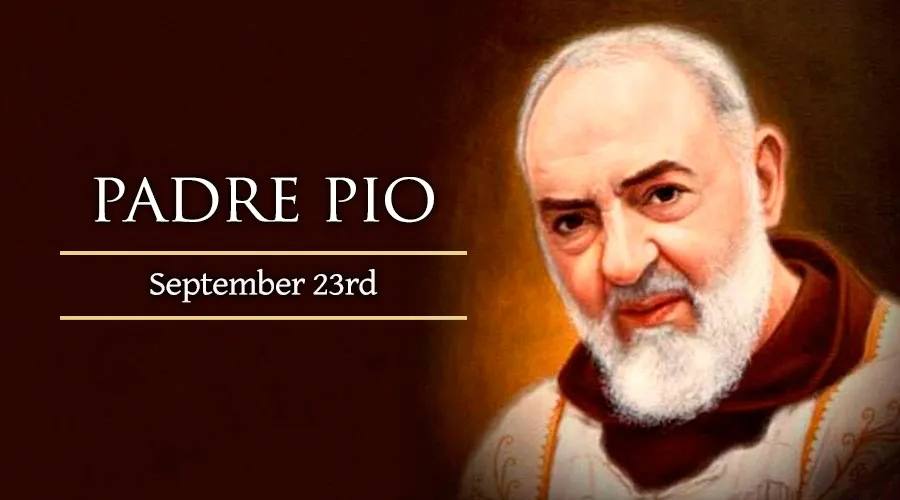
Saint of the day 23rd September, We Celebrate Saint Pio of Pietrelcina
On Sept. 23, the Catholic Church remembers the Italian Franciscan priest St. Pio of Petrelcina, better known as “Padre Pio” and known for his suffering, humility and miracles.
The man later known by these names was originally named Francesco Forgione, born to his parents Grazio and Maria in 1887. His parents had seven children, two of whom died in infancy. They taught the five surviving children to live their faith through daily Mass, family prayer of the rosary, and regular acts of penance.
Francesco had already decided at a young age to dedicate his entire life to God. At age 10, he felt inspired by the example of a young Capuchin Franciscan, and told his parents: “I want to be a friar – with a beard.” Francesco’s father spent time in America, working to finance his son’s education so he could enter the religious life.
On Jan. 22, 1903, Francesco donned the Franciscan habit for the first time. He took the new name Pio, a modernized Italian form of “Pius,” in honor of Pope St. Pius V. He made his solemn vows four years later, and received priestly ordination in the summer of 1910. Shortly after, he first received the Stigmata – Christ’s wounds, present in his own flesh.
Along with these mystical but real wounds, Padre Pio also suffered health problems that forced him to live apart from his Franciscan community for the first six years of his priesthood. By 1916 he managed to re-enter community life at the Friary of San Giovanni Rotondo, where he lived until his death. He handled many duties as a spiritual director and teacher, covering for brothers drafted into World War I.
During 1917 and 1918, Padre Pio himself briefly served in a medical unit of the Italian army. He later offered himself as a spiritual “victim” for an end to the war, accepting suffering as a form of prayer for peace. Once again, he received the wounds of Christ on his body. They would remain with him for 50 years, through a succession of global conflicts.
Against his own wishes, the friar’s reputation for holiness, and attending miracles, began to attract huge crowds. Some Church officials, however, denounced the priest and had him banned from public ministry in 1931. Pope Pius XI ended the ban two years later, and his successor Pius XII encouraged pilgrimages to Padre Pio’s friary.
Known for patient suffering, fervent prayer, and compassionate spiritual guidance, Padre Pio also lent his efforts to the establishment of a major hospital, the “Home to Relieve Suffering.”
Padre Pio died in 1968, and was declared a saint in 2002. Three years after his death, Pope Paul VI marveled at his simple and holy life in an address to the Capuchin Order.
“A worldwide following gathered around him … because he said Mass humbly, heard confessions from dawn to dusk and was – it is not easy to say it – one who bore the wounds of our Lord,” Pope Paul explained. “He was a man of prayer and suffering.”

